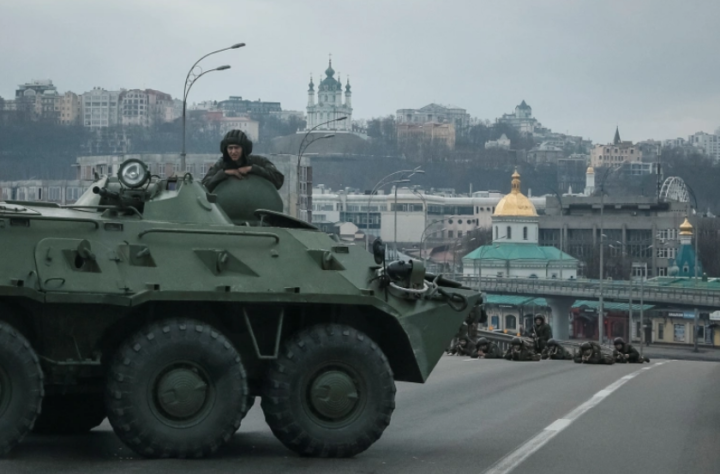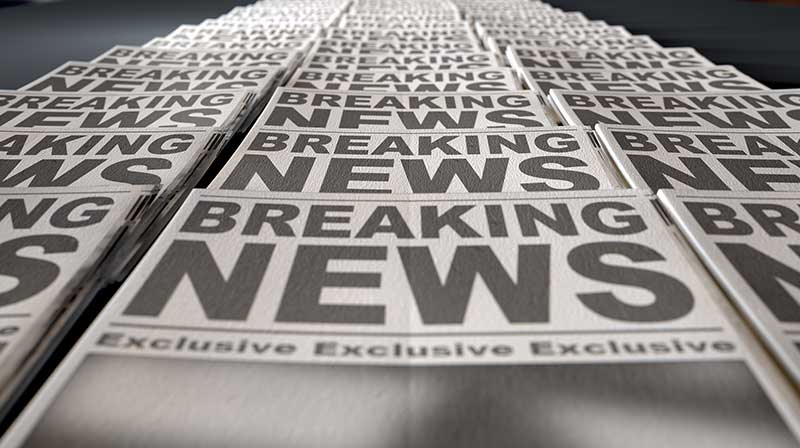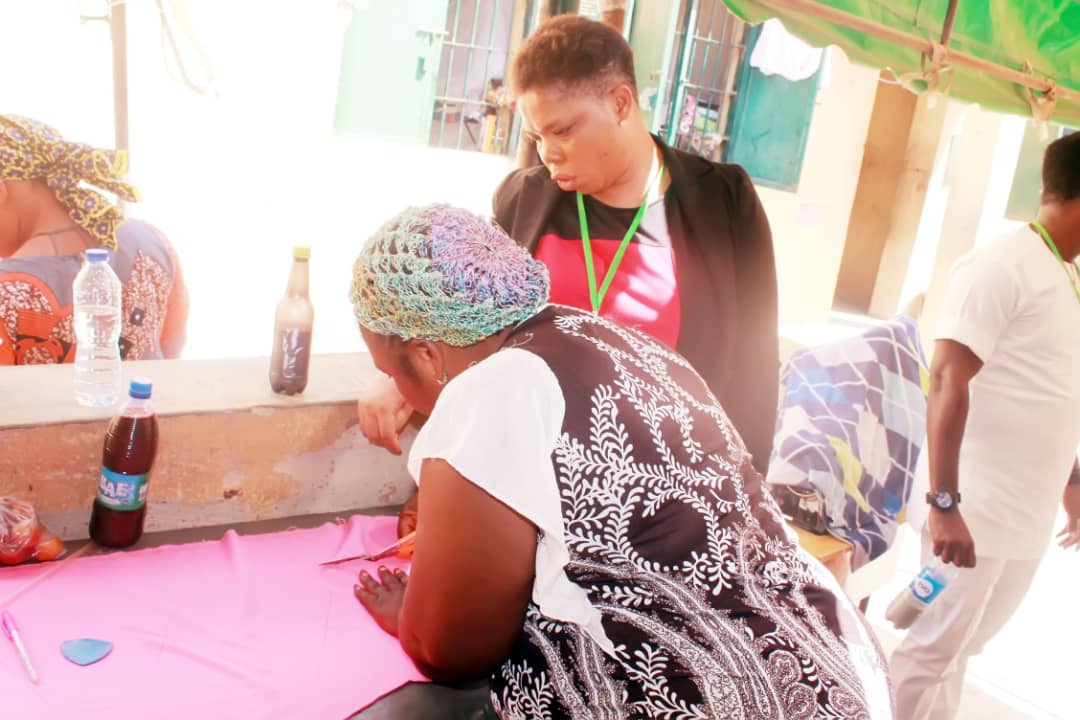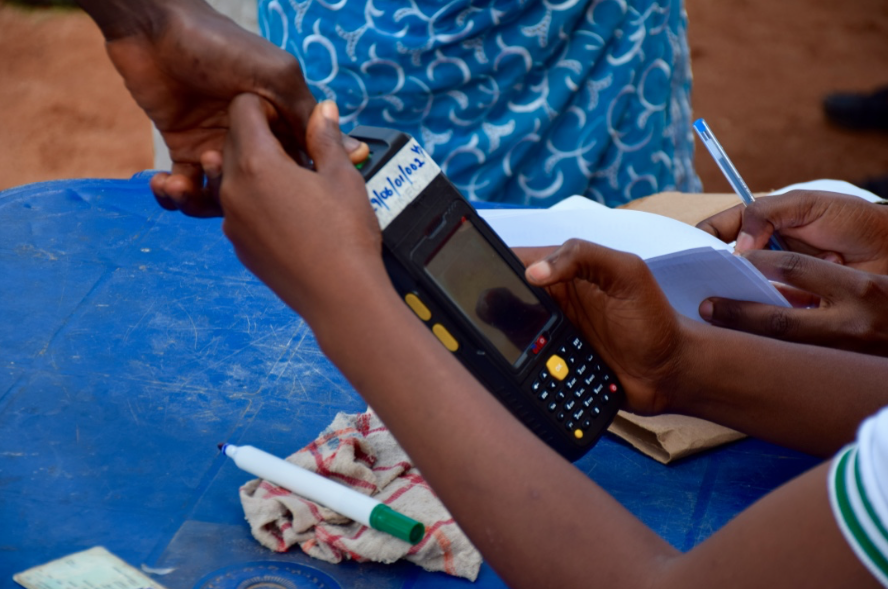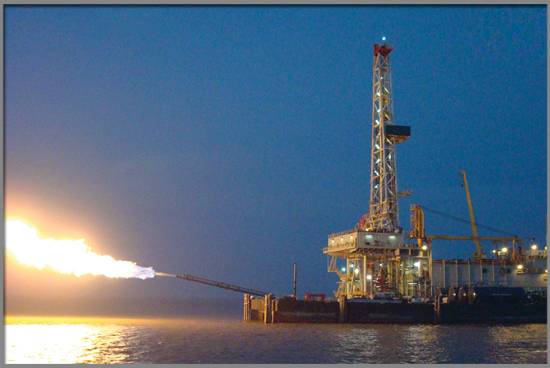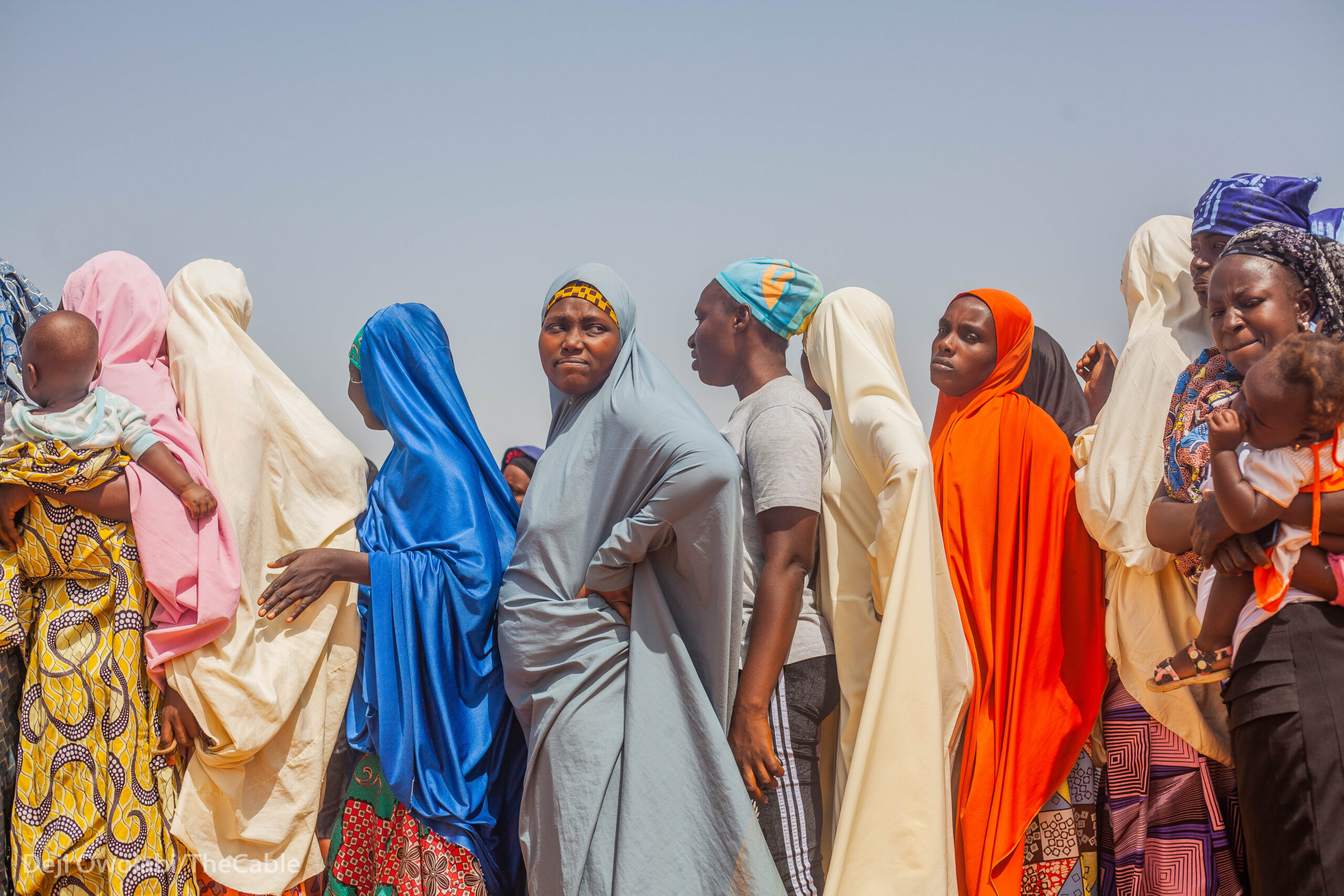Servicemen of the Ukrainian National Guard take positions in central Kyiv as they ready for an anticipated assault on the city by Russian ground forces [Gleb Garanich/Reuters]
BY TITILOLA BABATUNDE
Since Russia and Ukraine became the talk of every news channel, many have thrown in their opinions and criticisms. Oluwadara Mayokun, a graduate of law with a strong interest in international law, politics, and relations, has been very engaging on social media.
“In this world where we increasingly journalize social media as private diary, your ability to refrain from posting certain things is a sign of emotional intelligence. Your positions are not ipso facto incontrovertible evidence of maturity, but it goes a long way.” Mayokun said in a post, resting that these are sensitive issues and one has to allow common sense and constructive reasoning to lead one on the path of objective observation.
Against the backdrop of conflicting interests from international scenes, narratives must be well-straightened to avoid media misinformation. Titilola Babatunde reports the highlights of the roots and trigger events of the current conflict between the two Soviet nations.
Advertisement
Brewing Conflict
Russia continues to build up the conflict’s momentum by invading the major cities in Ukraine – an act that signals displacement of tens of thousands, impending European refugee crisis, and tough sanctions flying around. Russia still holds firm that it has no business with any other country, pointing accusing fingers at the United States and North Atlantic Treaty Organization (NATO). The lines drawn by the parties involved in this brewing conflict explains much of what is at stake.
Before all these, Vladimir Putin, the Russian leader had sent a list of demands to the US and NATO in December 2021. He asked that the US and its allies stop expanding its military, political, and economic base Eastward and to refuse Ukraine’s request to join NATO’s membership, promising withdrawal of his troops from Ukraine. It was perceived that these conditions would mean sustaining Russia’s security architecture against the West and stalling Ukraine’s geopolitical alignment with an enemy.
Advertisement
Michael Kofman, the research director in the Russia Studies Program at the CNA, a research and analysis group in Arlington Virginia, said: “The ultimatums are a Russian attempt not only to secure interest in Ukraine but essentially relitigate the security architecture in Europe.”
Some foreign policy analysts threw their weights behind Russia, asking why NATO would move closer to Russia’s border after the Cold War in the first place. The US and NATO rejected those demands, placing their hands on NATO’s curated policies, one of which allows sovereign states to choose their own security alliances.
“The open-door policy is the one that maximizes friction with Russia which has culminated in the crisis we have now,” said Mary Sarotte, an international relations expert from John Hopkins University.
Putin is playing by the books of Russia’s national security design. Military invasion, he believes, can prevent the anomalies that would set in if Ukraine combines its massive nuclear inheritance with the West. But the conflict, has thus, put the world on edge of imminent fallout.
Advertisement
Distrust over Ukraine’s inherited atomic arsenal and compatibility environment
When the Soviet Union disbanded in the early 90s, Ukraine, a former member of the union, got the third largest mass of nuclear weapons in the world. Fearing what it could do with such atomic strength, a series of diplomatic agreements were held in a bid to denuclearise the country. Ukraine sent hundreds of nuclear weapons back to Russia, exchanging these warheads with security promises that Russia would not attack – bringing alive a post-Soviet agreement.
However, in 2014, the nuclear agreement was questioned when Putin decided to annex Crimea Peninsula and sponsor pro-Russia separatists in the Eastern Donbas region in Ukraine. The moves attracted mass protests from citizens and international communities, leading to the removal of pro-Russian Ukrainian president Vicktor Yanukovych.
Putin became more agitated seeing US diplomats in those demonstrations and looked forward to President Barrack Obama’s reactions. Hesitant to make rash decisions that could set the stage for EU-Russian conflict, President Obama slowed down with mobilising diplomatic response and delayed sending Ukraine offensive weapons. Tensions have since been high since Russia backed the self-declared Luhansk and Donetsk.
Advertisement
Today’s conflict is fuelled by the intimidating position of post-Soviet Europe. Putin has conceived the idea of regaining Soviet’s lost glory to reminisce some semblance of a powerful empire that disappeared when the Soviet Union fell. For now, the center of this vision is Ukraine.
This is the same man who once declared that the Russians and Ukrainians “were one people – a single whole” that should stick together if not for external parties like the West meddling in their relationship and building a wall between the two.
Advertisement
Ukraine has not joined NATO, at least not officially, “but Ukraine became an informal member of NATO without a formal decision,” said Ruslan Bortnik, director of the Ukrainian Institute of Politics.
The Russian aggression since 2014 pushed Ukraine’s orientation toward NATO and EU but Putin sees the proposed alignment as a threat to Russia’s national security and quest for global repositioning. Theoretically in that sense, the Russian military engagement against Ukraine puts Moscow on the stage for conflict with the US, France, the UK, and other NATO members.
Advertisement
Another clause is the non-compatibility of Ukraine with NATO. No country will be allowed to join the NATO alliance without the unanimous decision of all 30 members of the alliance. In part, many oppose the membership request on the ground that Ukraine does not fulfil conditions for rule of law and democracy. The current uprising from a neighbour next door and the struggling intent to belong somewhere else put Ukraine in a difficult position.
All eyes on Zelensky with the West facing its own pressures
Advertisement
Russia sees Ukraine as a good stage to reaffirm its influence in Europe. The conflict could be a continuation of what happened in 2014 but recent political and economic developments in Ukraine, the US, and the West, in general, may have prompted Putin to act at the time he is doing now.
Starting from Ukraine’s comic political transition that saw Volodymyr Zelensky, a comedian who played ‘president’ on TV, became an actual president; everything else seems to be taking a scripted shape. With the US’s Afghanistan withdrawal, Brexit imbroglio, Germany’s unstable government after Angela Markel’s exit, EU grappling with Covid-19 pandemic, and France’s upcoming elections, the West is currently experiencing heated pressures from different sides.
Putin wants Zelensky to fulfil the terms of the 2014 and 2015 Minsk agreements that include supporting pro-Russian regions and allowing them to be part of Ukraine. This could amount to a spy agenda – the case of a Trojan horse in Moscow’s favour. Zelensky apparently does not subscribe to this, thus, turning to NATO for help. His promise of having talks with Putin directly for peace talks and conflict resolution between the two nations did not materialise.
The trigger
Russia saw an impending danger when Zelensky publicly declared in an interview in 2021 Ukraine’s intention to join NATO. Putin and his administrators felt that all diplomatic and political tools to make Ukraine realign with Russia had failed.
“Moscow security elites feel that they have to act now because if they don’t, military cooperation between NATO and Ukraine will become even more intense and even more sophisticated,” said Sarah Pagung from the German Council on Foreign Relations.
Putin is not ready to allow NATO a breathing space near him and NATO is also not ruling out the idea of expanding its control to the East. Ukraine is at the centre of this unregulated battle for sovereignty and international dominance.
Back in 2008, Ukraine sent its first request to join NATO membership action plan (MAP). This was later abandoned in 2010 when pro-Russian Viktor Yanukovych was elected Ukraine president. Yanukovych until his removal during the unrest in 2014 embraced Putin’s Russia and kept Ukraine’s non-aligned status with NATO.
Talks about joining NATO resumed in early 2019 when the Ukrainian constitution was amended to include National Security Strategy for joining NATO and EU. During the Brussels Summit in 2021, NATO confirmed its intention to initiate the open-door policy that would place Ukraine in a position to voluntarily become part of the membership action plan (MAP) of NATO without any external influence saying no.
However, the fear was that the lack of a clear date or specific deadline for NATO to implement this plan will put Ukraine in harm’s way. Russia would have more than enough time to strategically plan and implement measures to force Ukraine back into the fold before NATO could blink an eye.
“Ukraine has shown to its principles and positions that we are fully prepared and able to be a member of NATO. This means that at the Madrid summit this year, we hope to see and hear very specific conditions and information about this, because today, especially today, I would like to repeat that now, this is a matter of life and death for our country,” Andrii Yermak, chairman of the Office of the Ukrainian President said in January 2022.
NATO’s dissociation from a territorial conflict it brewed
By November 2021, NATO’s presence was sighted in Ukraine. The deployment of long-range missiles became a concern for Russia. For any hypersonic weapon, it will take five minutes to hit Russia from the Ukrainian border, and 10 minutes for most kinds of strike systems.
Since then, both Moscow and the White House have accused each other of building up military presence around Ukraine. The growing tensions meant Russia was not ruling out an invasion if Ukraine’s entry into NATO became clearer, and it did.
The US and its allies had warned their citizens to leave Ukraine after deciding that they will not send troops to fight in a country that is yet to be a member of NATO. Although, thousands of American troops have been deployed to Europe (Poland, Germany, and Romania) to support NATO, but the fight is not theirs, at least, not yet.
Russia launched its military operation against Ukraine on February 24, 2020, after months of military presence along its border. International condemnations have not been able to stop the military entry into major Ukrainian cities such as Kharkiv, Odesa, and Kyiv.
Conflict and innocent causalities
In a statement circulated by the Russian defence ministry, precision weapons are used to target air defence facilities, military infrastructure, and aviation of the Armed Forces of Ukraine. Russian-backed separatists have also backed the invasion, launching offensive attacks against Ukrainian forces in their towns.
At publishing time, the Russian military confirmed 498 troops have been killed in Ukraine since the invasion began. Ukraine is not revealing the actual numbers of deaths it has suffered but different non-governmental groups say they have recorded thousands (of military and civilian causalities).
Beyond human causalities (deaths and displacement), the current conflict puts the economy of the world at stake. The US and its allies are on the verge of enforcing tough sanctions on Russia, a major event-shaper in the world. Russia holds a lot of stake in trading of raw materials and oil and gas. The sanctions, trade and financial, will transcend the shores of Russia and hit every player in the market. The implication is a prolonged economic instability
Be that as it may, Putin designed the current event. With the US and NATO looking from afar, it may mean Putin has already won the battle to regain lost Ukraine. But the conflict in Ukraine is more than Ukraine joining NATO. Ukraine has found itself in the middle of a longstanding standoff between Putin and the West, something beyond Zelensky and his 44 million citizens.
Root problems abandoned
Looking beyond the current territorial conflict between two brothers of the same Soviet Union, few believe the crisis is not one that can be resolved soon. And for a few reasons, if it is resolved, cannot last.
First, Russia is unlikely to reverse Crimea’s annexation. The Ukrainian government is neither willing to allow pro-Russian groups and their ideologies to find strong roots in the country. Following a legitimate way to annex Crimea will set the machinery to solve the conflict in motion but it does not look like both countries and the West are close to discovering such a way.
Again, the conflict, since 2014, has caused a lot of damage that cannot be easily undone. The intention to repair the strained relationship is questionable at this point. The conflict itself is the implication of prolonged unrepaired relations.
At the fore of the conflict are Russia-Putin’s personalised political system and Ukraine’s oligarchy. But behind these historical narratives lies an untamed tension between the West’s desire to expand and Russia’s resolve to prevent it, even if it means stopping states from taking the West in. Both thus can turn any situation into an excuse to pass a message of intent and the current invasion is just of one those golden chances.
Babatunde Titilola writes from Ibadan. He can be reached via [email protected] and +2348057324483
Views expressed by contributors are strictly personal and not of TheCable.
